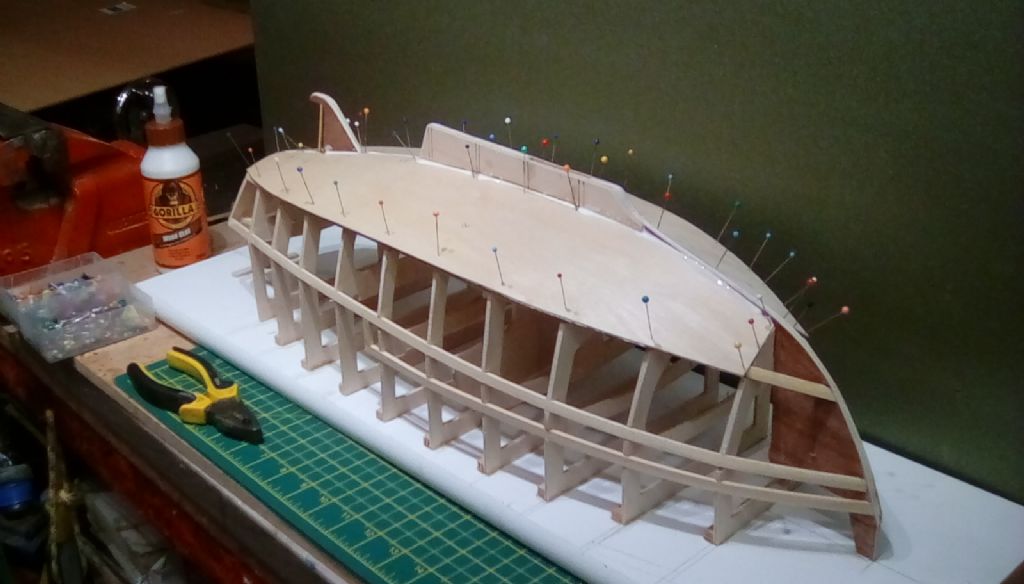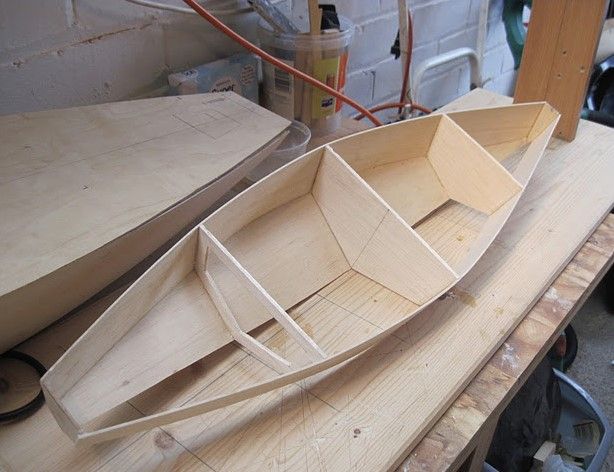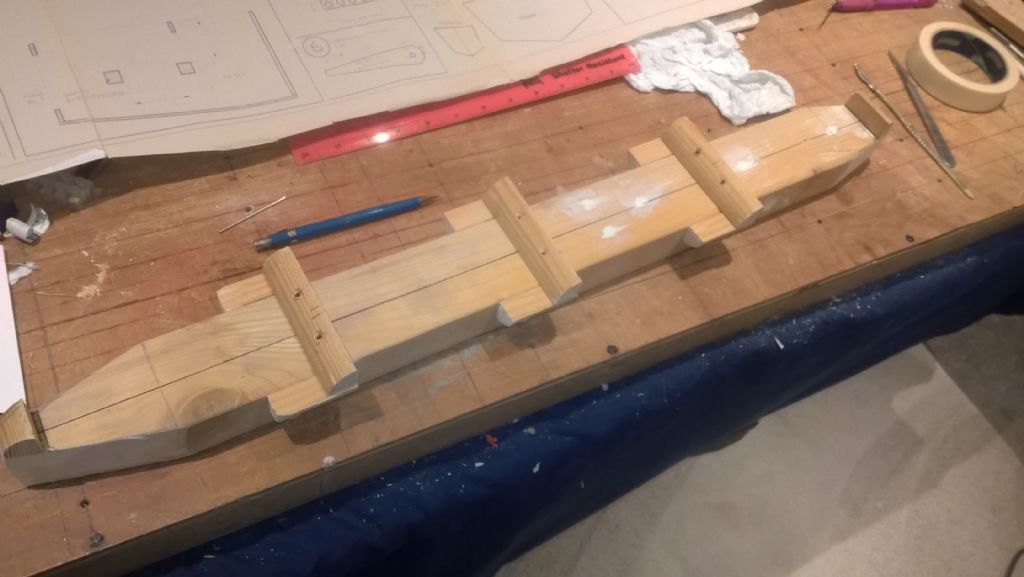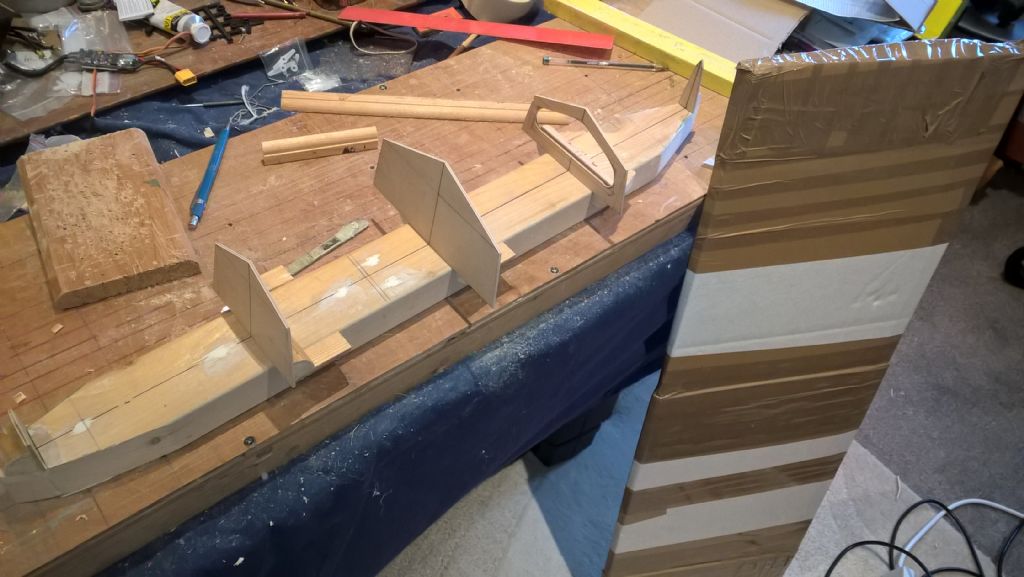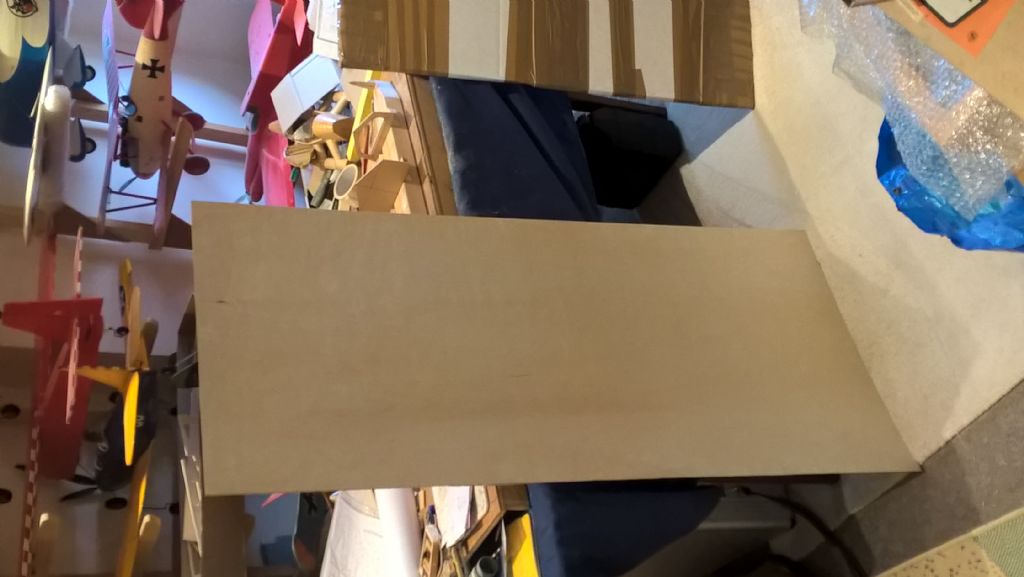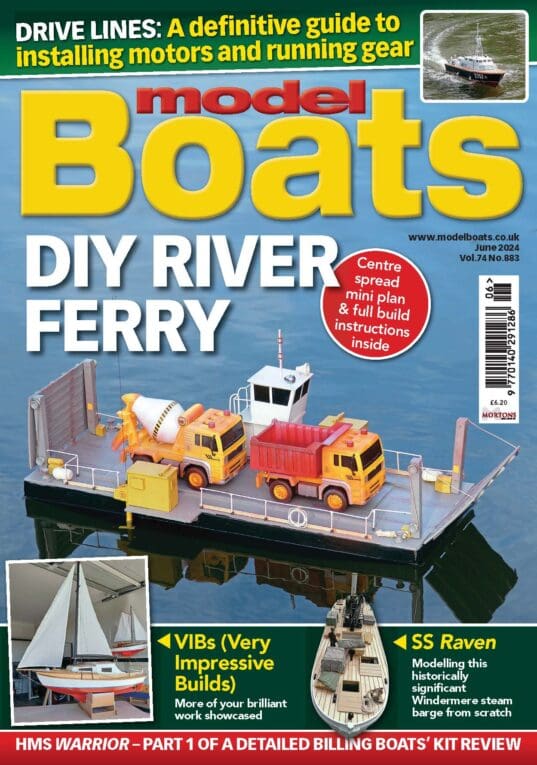Here is the plan I have.
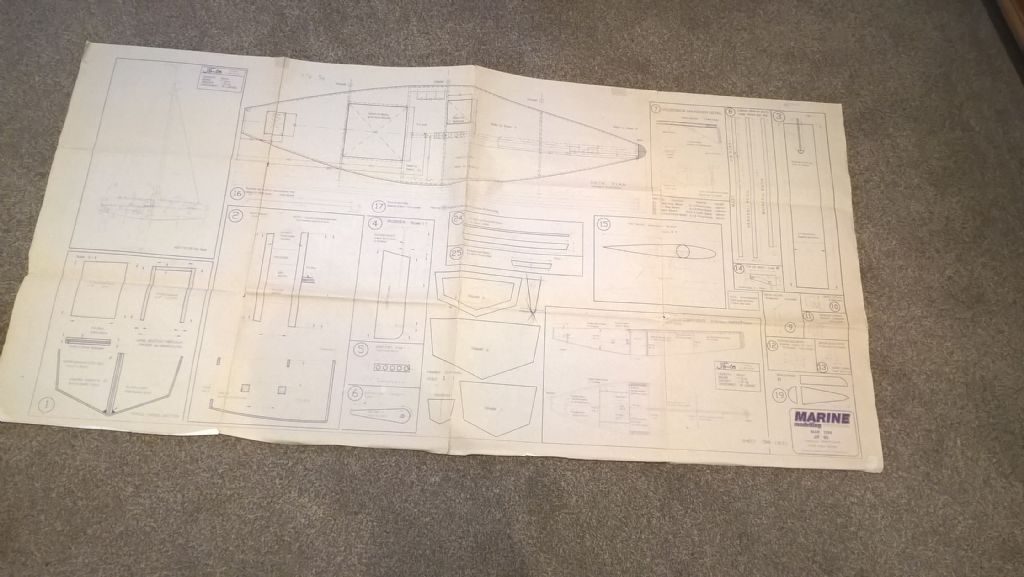
I see that it is sheet 1 of 2, I do not have sheet 2. The reason being the friend who gave me the plan, gave me the one,sadly he has since died.
Looking carefully at the plan, I find with respect to the hull, there are no details of the materials to be used, such as thickness. I assume that the skins are ply, measuring where I can, the skins seem to be 2mm, the formers 3mm.
For ease of bending and working I would prefer 1.6mm. I guess this should be birch ply, whatever thickness? As for the formers, I have some 3mm light ply, would this be OK, or does this need to be std, or birch ply?
The stringers (or whatever they should be called) appear to be quite chunky on the pictures and threads I have been pointed at. I had been thinking of using 1/8"*1/4" spruce, is this a little light. Even if I laminate two pieces, with the aim to keeping the bending easy?
My lack od experience is most obvious in that I have a lot of indecision. This goes down to the timber balk, to attach the bulkheads/formers. If I keep it relatively narrow, it should be easier to work around the lower skin(actually the top, when sailing). A wider piece keeps it more stable on the work top.
I have only just worked out that the formers need to be deeper, to allow the lower skins to be attached. Although the plan came with templates to the drawing.
If my friend was still alive a lot of these questions would have been answered by him. He certainly was very concerned about weight. In my case not a pressing issue, as i will not be competing. My challenge is initially, maybe long term getting it to go where I want. Only then maximising the speed that the boat can achieve, although this is not anything like a priority.
I expected to finish the hull in a finishing cloth, using either Finishing Resin or Water Based Varnish (WBV) (Ronseal Hardglase). Is this a good idea?
Any thoughts on materials, sizes will be appreciated, as hopefully I can avoid pitfalls, and understand the limitations of any options.
Also can any one point me to an image of a JIF plan with more information than my plan, particularly sheet 2, what is on it?
I will probably purchase if possible the sails, as I cannot sew, and often the small items required cost more than a comprehensive purchased item.
I have only just realised I have no idea on servo arrangements or rigging, although this is probably an issue far into the future. Although I would like to have some knowledge of where I will be heading.



